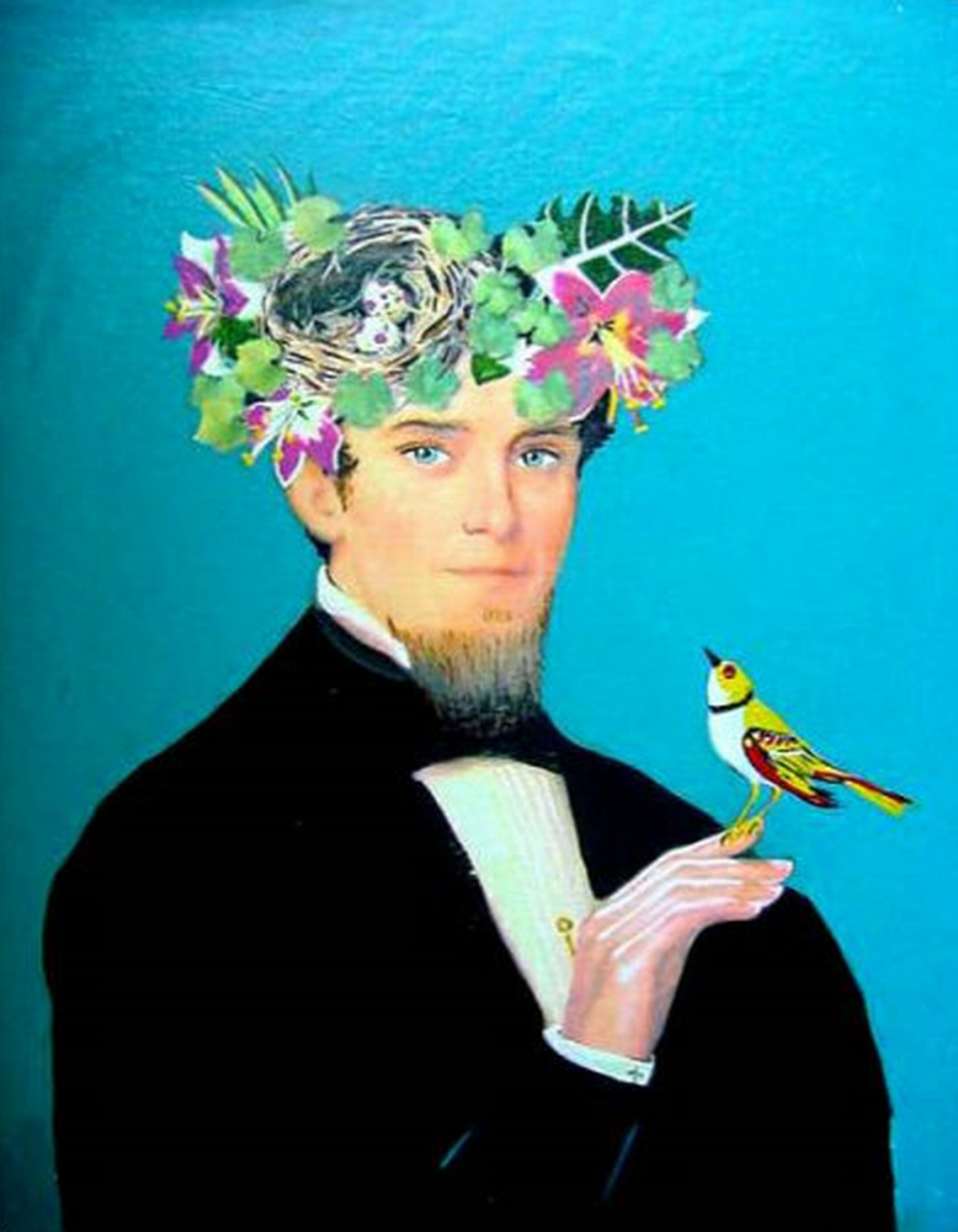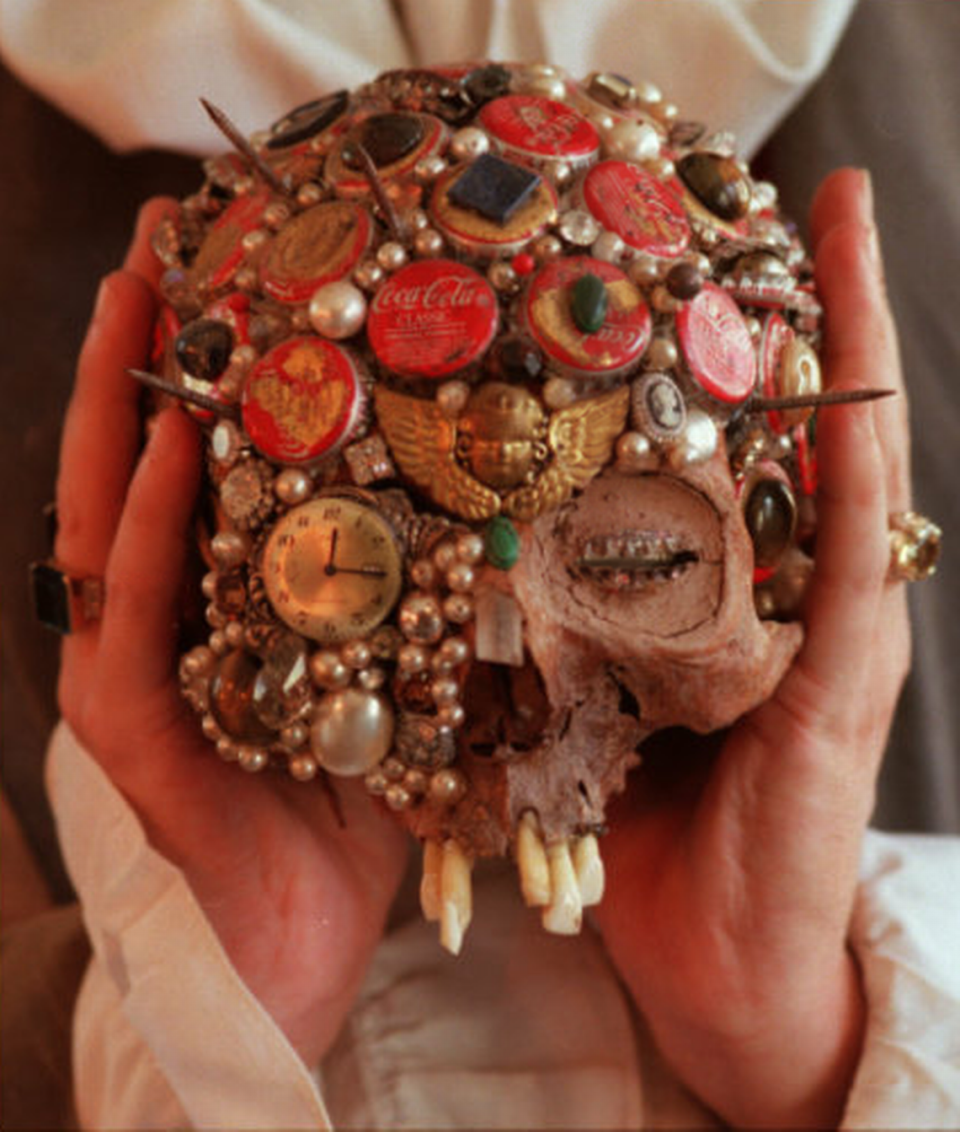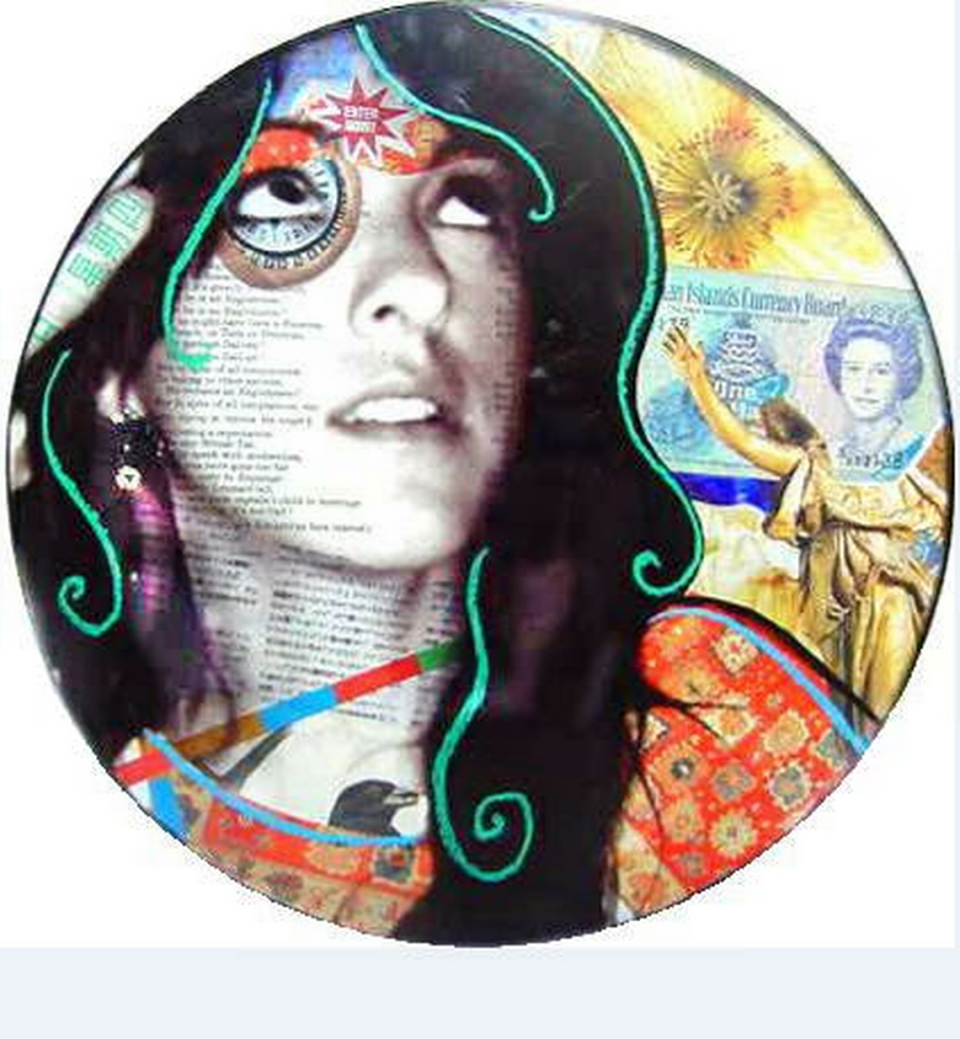Louis St. Lewis, a provocative artist who captivated the Triangle, has died
Louis St. Lewis, a colorful and offbeat artist who captured the Triangle’s attention for decades, both with his art and personal style, died last month. He was 60.
St. Lewis worked prolifically from the 1980s onward, and became known for combining his pop-art sensibilities with classical images, as well as eclectic works of assemblage — three-dimensional collage work — and mixed-media which were shown in galleries from Raleigh to Paris.
Influenced heavily by Andy Warhol, St. Lewis’ work often featured famous individuals, like David Bowie or Elvis, and commented on the nature of celebrity and pop culture. Warhol even once took photos of St. Lewis at a New York City party, Walter Magazine reported, and Lewis once said the first piece of art he ever fell in love with was “Marilyn Monroe’s Lips,” a 1962 piece by Warhol that he saw at the Hirshhorn Museum and Sculpture Garden in Washington.
His death was announced in an obituary in The News & Observer. The N&O wasn’t able to learn the cause of his death Sunday afternoon.
St. Lewis was preceded in death by his longtime partner, Roger Messer, and is survived by Messer’s daughter, Ryan Messer Wilson, according to his obituary.
“Louis’ strength as an artist had everything to do with his ability to transform images and artifacts into unexpected, original compositions, naming them so cleverly through his deep understanding of mythology, music, and art history,” said his collaborator Nate Sheaffer, of the Raleigh studio GLAS. “In the Triangle arts community he lived up to his reputation as provocateur, imp, and genius, frequently charming artist allies while infuriating others.”

Raised in the small North Carolina town of Wadesboro, about 50 miles southeast of Charlotte, St. Lewis was born with the name Louis Lewis, and briefly attended the UNC School of the Arts, according to an N&O profile from 2001. He later added the “St.” to his name, as he crafted a larger-than-life persona.
“I self-beatified in 1982,” St. Lewis was quoted as saying in his obituary. “I decided I had suffered enough in childhood and schooling, so I might as well grab the title. And I have performed a miracle as required of any saint: I’ve made a living with art.”
Pam Leden O’Connor, a close friend of St. Lewis who met him while working at the PlayMakers Repertory Company in Chapel Hill, said St. Lewis was ahead of his time when it came to melding his personal life with his art.
“He really pushed the envelope from his earliest shows in North Carolina,” she said, and people were drawn to his free-spirited personality.
“And, you know, he grew up in a time when being an out gay man was not as acceptable,” she added. “In those times, being openly gay, and being a free-living, free-spirited person, it was very brave and I think very difficult.”
A longtime resident of Chapel Hill, St. Lewis was immediately recognizable in any Triangle art gallery, thanks to his penchant for wearing eye-catching clothing, such as a turn-of-the-century uniform of a riding jacket and pants and a silk top hat or a Napoleonic cape and hat.
“There are plenty of boring people in this world,” he once told The N&O about his wardrobe. “There are plenty of boring people in this state. There are designers out there who are doing wild clothes, and they’re expecting someone to wear them. I think artists are one of the few people who actually get away with wearing them without losing their jobs.”

St. Lewis was certainly not boring, and was known for being a mischievous prankster. He once donned a fake persona and published a letter to the editor in the Independent Weekly as revenge for a poor review, The N&O reported, and he often gave false biographical details to journalists who covered his art shows. He once claimed he had been found as a baby in New Orleans and named by a group of nurses, his profile in The N&O reported.

“We still have the ability to say who you want to be and be who you want to be if we can rise to the occasion,” St. Lewis told The N&O of his blurring of reality. “As a performance artist, I retain the right to be a chameleon.”
Working with him was “akin to stepping onto a rollercoaster after having been informed that random carriages might come off the rails without notice,” Sheaffer said. “The trip, however harrowing, was always worth the price of admission.”
St. Lewis was influential throughout the Triangle arts scene, notably working frequently with Artsplosure, Raleigh’s city-funded annual arts festival. A poster he made for the 1997 edition of the festival led to some controversy, as it was viewed as a protest against Raleigh’s then-Mayor Tom Fetzer.

St. Lewis’ poster for the festival featured a man in drag, which many saw as a response to Fetzer’s attempts to crack down on a Raleigh nightclub that featured male dancers dressed as women, The N&O reported at the time.
“At the time, the Artsplosure staff was blindsided and concerned,” the organization wrote in a blog post mourning St. Lewis’ death. “But, as Louis later told the Artsplosure staff, his ‘medicine may have stung at the time but it only made Artsplosure more famous.’ And it did! This image went on to become one of our all time favorites.”


